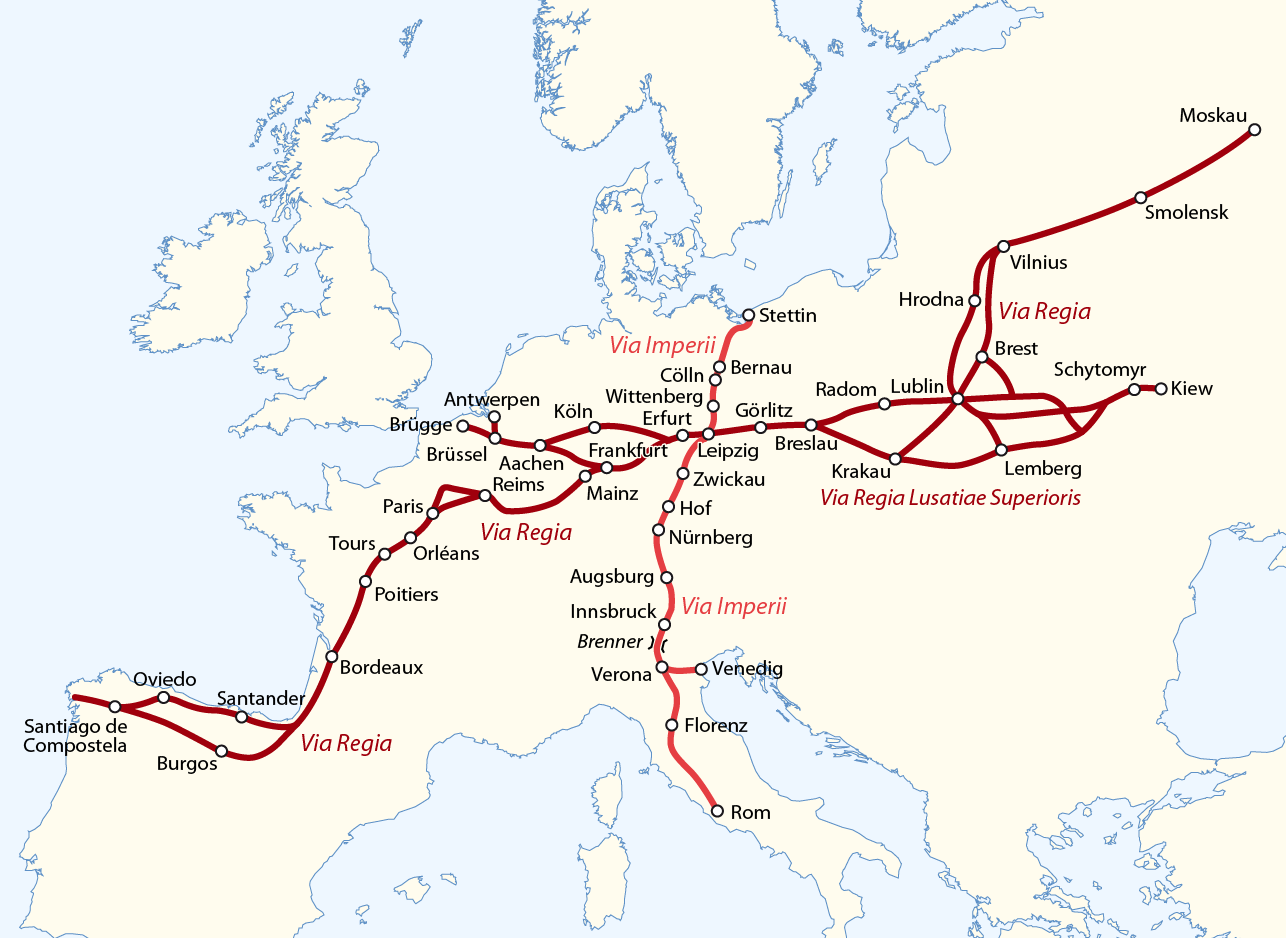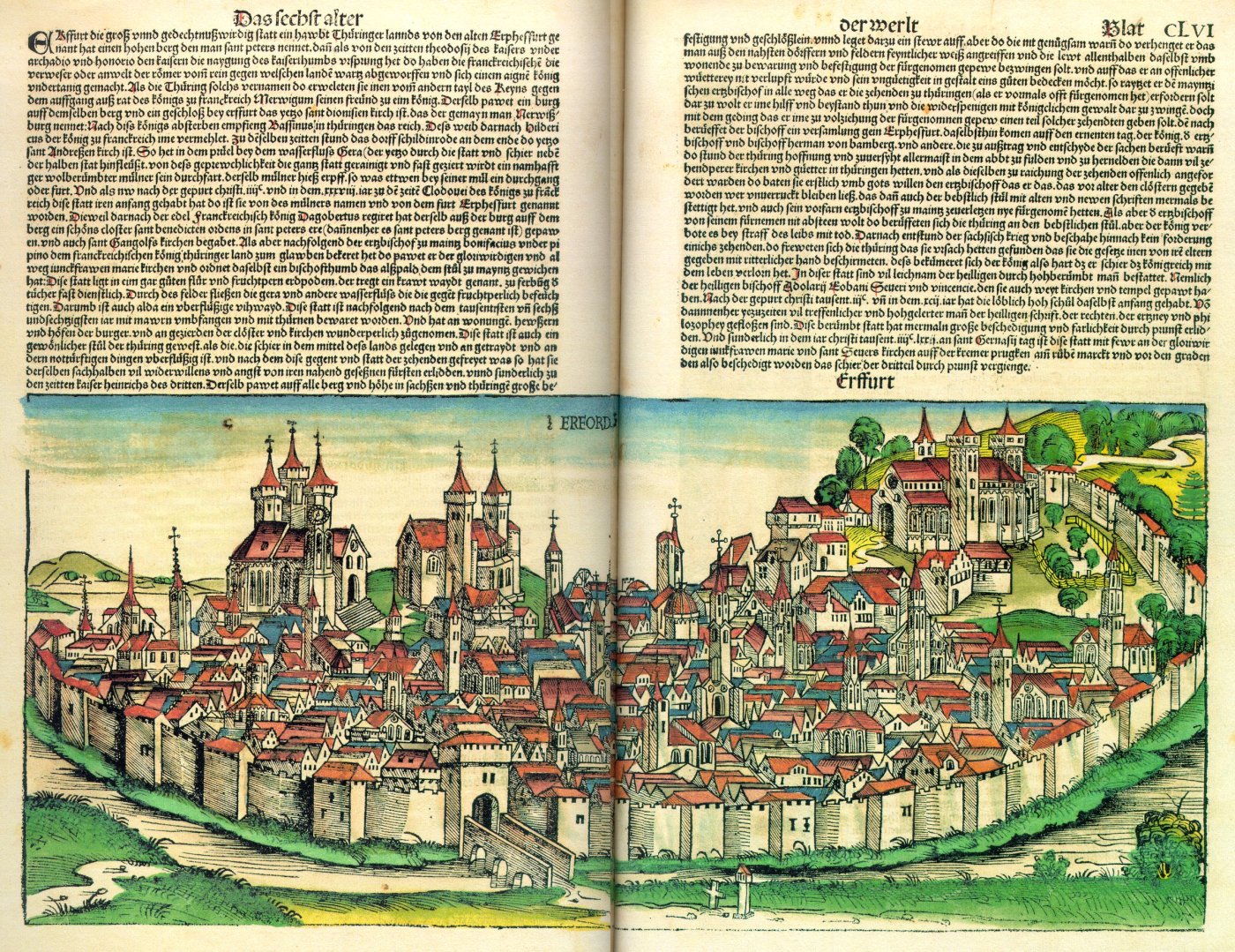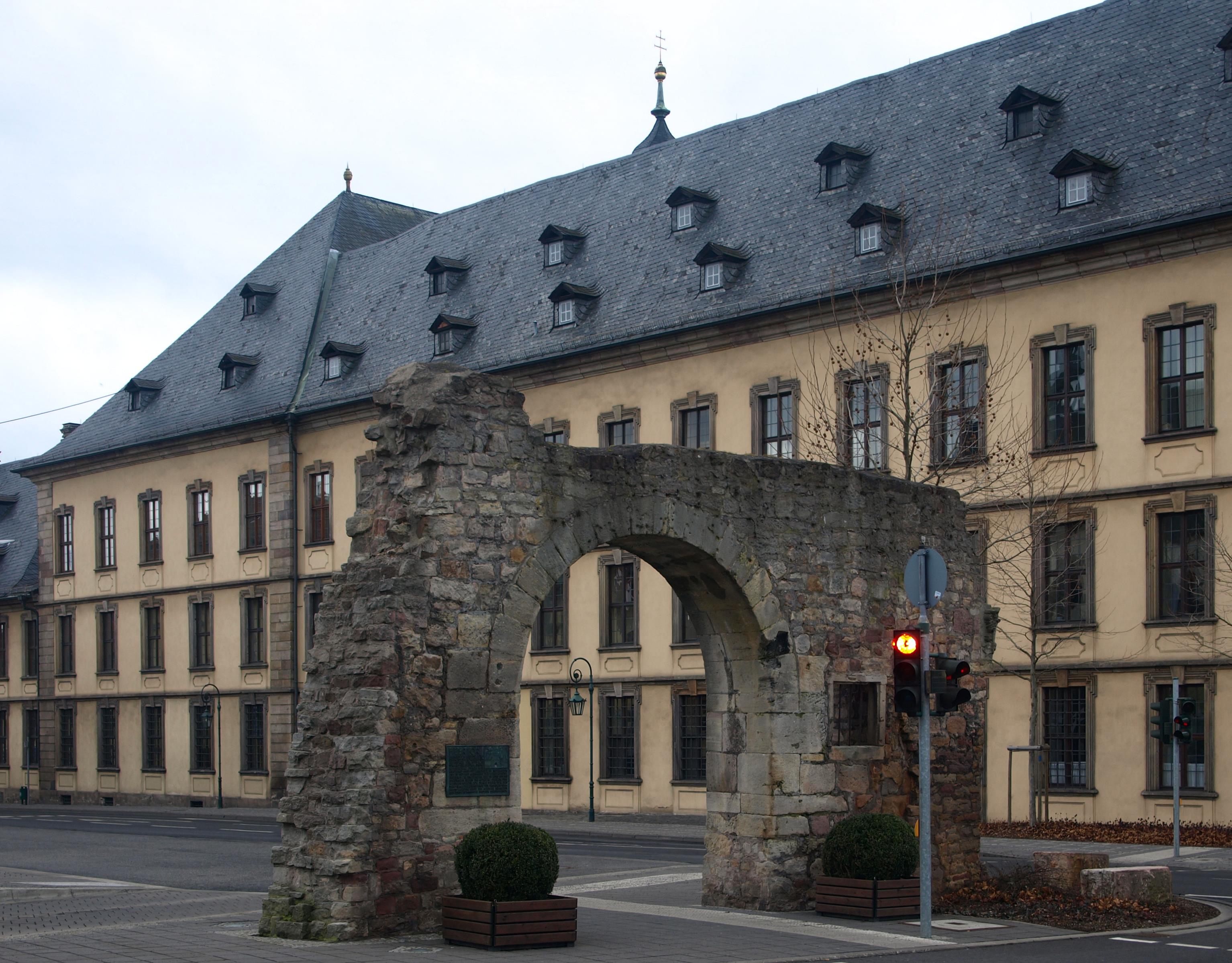|
Via Regia
The Via Regia (Royal Highway) is a European Cultural Route following the route of the Historic roads, historic road of the Middle Ages. There were many such ''viae regiae'' associated with the king in the medieval Holy Roman Empire. History Origins The Via Regia ran west–east through the centre of the Holy Roman Empire, from the Rhine at Mainz-Kastel (''Elisabethenstraße'') to Frankfurt am Main, trade city and site of the Imperial election, election of the King of the Romans, continuing along Hanau, the ''Kaiserpfalz'' at Gelnhausen, the towns of Steinau an der Straße, Neuhof, Hesse, Neuhof, Fulda and Eisenach to Erfurt, a centre of Isatis tinctoria, woad production. It ran further eastwards to Eckartsberga, crossing the Saale river between Bad Kösen and Naumburg and reached Leipzig, another trade city. The eastern part continued through Upper Lusatia (''Via Regia Lusatiae Superioris'') along Großenhain, Königsbrück, Kamenz, Bautzen and Görlitz to Wrocław in Silesia ... [...More Info...] [...Related Items...] OR: [Wikipedia] [Google] [Baidu] |
Moscow
Moscow is the Capital city, capital and List of cities and towns in Russia by population, largest city of Russia, standing on the Moskva (river), Moskva River in Central Russia. It has a population estimated at over 13 million residents within the city limits, over 19.1 million residents in the urban area, and over 21.5 million residents in Moscow metropolitan area, its metropolitan area. The city covers an area of , while the urban area covers , and the metropolitan area covers over . Moscow is among the world's List of largest cities, largest cities, being the List of European cities by population within city limits, most populous city entirely in Europe, the largest List of urban areas in Europe, urban and List of metropolitan areas in Europe, metropolitan area in Europe, and the largest city by land area on the European continent. First documented in 1147, Moscow became the capital of the Grand Principality of Moscow, which led the unification of the Russian lan ... [...More Info...] [...Related Items...] OR: [Wikipedia] [Google] [Baidu] |
Middle Ages
In the history of Europe, the Middle Ages or medieval period lasted approximately from the 5th to the late 15th centuries, similarly to the post-classical period of global history. It began with the fall of the Western Roman Empire and transitioned into the Renaissance and the Age of Discovery. The Middle Ages is the middle period of the three traditional divisions of Western history: classical antiquity, the medieval period, and the modern period. The medieval period is itself subdivided into the Early, High, and Late Middle Ages. Population decline, counterurbanisation, the collapse of centralised authority, invasions, and mass migrations of tribes, which had begun in late antiquity, continued into the Early Middle Ages. The large-scale movements of the Migration Period, including various Germanic peoples, formed new kingdoms in what remained of the Western Roman Empire. In the 7th century, North Africa and the Middle East—once part of the Byzantine Empire� ... [...More Info...] [...Related Items...] OR: [Wikipedia] [Google] [Baidu] |
Isatis Tinctoria
''Isatis tinctoria'', also called woad (), dyer's woad, dyer's-weed, or glastum, is a flowering plant in the family Brassicaceae (the mustard family) with a documented history of use as a blue dye and medicinal plant. Its genus name, ''Isatis'', derives from the ancient Greek word for the plant, . It is occasionally known as Asp of Jerusalem. Woad is also the name of a blue dye produced from the leaves of the plant. Woad is native to the steppe and desert zones of the Caucasus, Central Asia to Eastern Siberia and Western Asia but is now also found in South-Eastern and Central Europe and western North America. Since ancient times, woad was an important source of blue dye and was cultivated throughout Europe, especially in Western and Southern Europe. In medieval times, there were important woad-growing regions in England, Germany and France. Towns such as Toulouse became prosperous from the woad trade. Woad was eventually replaced by the more colourfast ''Indigofera tinctori ... [...More Info...] [...Related Items...] OR: [Wikipedia] [Google] [Baidu] |
Erfurt
Erfurt () is the capital (political), capital and largest city of the Central Germany (cultural area), Central German state of Thuringia, with a population of around 216,000. It lies in the wide valley of the Gera (river), River Gera, in the southern part of the Thuringian Basin, north of the Thuringian Forest, and in the middle of a line of the six largest Thuringian cities ('':de:Thüringer Städtekette, Thüringer Städtekette''), stretching from Eisenach in the west, via Gotha, Erfurt, Weimar and Jena, to Gera in the east. Together with Kassel and Göttingen, it is one of the cities with more than 100,000 inhabitants lying closest to the geographic centre of Germany. Erfurt is south-west of Leipzig, north-east of Frankfurt, south-west of Berlin and north of Munich. Erfurt's old town is one of the best preserved medieval city centres in Germany. The Gera (river), Gera is spanned by the Krämerbrücke, Merchants' Bridge (''Krämerbrücke''), one of the rare bridges with ho ... [...More Info...] [...Related Items...] OR: [Wikipedia] [Google] [Baidu] |
Eisenach
Eisenach () is a Town#Germany, town in Thuringia, Germany with 42,000 inhabitants, west of Erfurt, southeast of Kassel and northeast of Frankfurt. It is the main urban centre of western Thuringia, and bordering northeastern Hesse, Hessian regions, is near the former Inner German border. A major attraction is Wartburg castle, which has been a UNESCO World Heritage Site since 1999. Eisenach was an early capital of Thuringia in the 12th and 13th centuries. St.Elizabeth of Hungary, Elizabeth lived at the court of the Ludowingians here between 1211 and 1228. Later Martin Luther came to Eisenach and translated the Luther Bible, Bible into German. In 1685 Johann Sebastian Bach was born here. During the early modern period Eisenach was a residence of the Ernestine House of Wettin, Wettins and was visited by numerous representatives of Weimar classicism like Johann Wolfgang Goethe. In 1869 the Social Democratic Workers' Party of Germany, SDAP, one of the two precursors of the Social D ... [...More Info...] [...Related Items...] OR: [Wikipedia] [Google] [Baidu] |
Fulda
Fulda () (historically in English called Fuld) is a city in Hesse, Germany; it is located on the river Fulda and is the administrative seat of the Fulda district (''Kreis''). In 1990, the city hosted the 30th Hessentag state festival. History Middle Ages In 744 Saint Sturm, a disciple of Saint Boniface, founded the Benedictine monastery of Fulda as one of Boniface's outposts in the reorganization of the church in Germany. The initial grant for the abbey was signed by Carloman, Mayor of the Palace in Austrasia (in office 741–47), the son of Charles Martel. The support of the Mayors of the Palace, and later of the early Pippinid and Carolingian rulers, was important to Boniface's success. Fulda also received support from many of the leading families of the Carolingian world. Sturm, whose tenure as abbot lasted from 747 until 779, was most likely related to the Agilolfing dukes of Bavaria. Fulda also received large and constant donations from the Etichonids, a lea ... [...More Info...] [...Related Items...] OR: [Wikipedia] [Google] [Baidu] |
Neuhof, Hesse
Neuhof is a municipality in the district of Fulda, in Hesse, Germany. It is situated 15 km southwest of Fulda. Villages in Neuhof * Dorfborn * Giesel (Neuhof) * Hattenhof (Neuhof) * Hauswurz * Kauppen (Neuhof) * Rommerz * Tiefengruben (Neuhof) People * Wilhelm Diegelmann Wilhelm Diegelmann (28 September 1861 – 1 March 1934) was a German actor. Career Diegelmann's first stage appearance was in 1878 in the chorus for the Frankfurt Opera. In 1881 he debuted at the Frankfurt City Theater, playing King Lear, Wil ... (1861-1934), German actor References External linksNeuhof municipality Fulda (district) {{Hesse-geo-stub ... [...More Info...] [...Related Items...] OR: [Wikipedia] [Google] [Baidu] |
Steinau An Der Straße
Steinau an der Straße (, ) is a town of around 10,000 inhabitants in the Main-Kinzig district, in Hesse, Germany. It is situated on the river Kinzig (Main), Kinzig, southwest of Fulda. The name ''Steinau'' refers to stones in the river; ''an der Straße,'' meaning ''on the road,'' refers to the historic trade route Via Regia from Leipzig to Frankfurt on which it was located. Steinau is best known for the Brothers Grimm who spent part of their childhood here. Geography Location Steinau is located at an elevation of around above Normalhöhennull, NHN in the valley of the Kinzig (Main), Kinzig river which divides the hills of the Spessart (to the south) from the Vogelsberg (to the north). The municipal territory extends into both ranges. Subdivisions Steinau consists of the following ''Stadtteile'': , , Klesberg, , , , , , , , Steinau proper, and . Neighbouring communities The neighbouring communities are from the north (clockwise): Freiensteinau, Neuhof, Hesse, Neuhof, Flieden, ... [...More Info...] [...Related Items...] OR: [Wikipedia] [Google] [Baidu] |
Gelnhausen
Gelnhausen () is a town, and the capital of the Main-Kinzig-Kreis, in Hesse, Germany. It is located approximately 40 kilometers east of Frankfurt am Main, between the Vogelsberg mountains and the Spessart range at the river Kinzig (Main), Kinzig. It is one of the eleven towns (urban municipalities) in the district. Gelnhausen has around 22,000 inhabitants. History Gelnhausen is located on the German Fairy Tale Route, a tourist route, and nicknamed "Barbarossa city, Barbarossastadt". The Imperial Palace, Gelnhausen, Imperial Palace Gelnhausen was founded by Frederick I, Holy Roman Emperor, Emperor Frederick Barbarossa between 1169 and 1170 because the Gelnhausen settlements were at the intersection of the Via Regia trade road. Gelnhausen received German town law, town privileges. The emperor also granted market town, trade privileges like the staple right which forced traveling merchants to offer their goods in the town for three days. In 1180 the Gelnhausen Act was passed a ... [...More Info...] [...Related Items...] OR: [Wikipedia] [Google] [Baidu] |
Kaiserpfalz
The term ''Kaiserpfalz'' (, "imperial palace") or ''Königspfalz'' (, "royal palace", from Middle High German ''phal ne'' to Old High German ''phalanza'' from Middle Latin ''palatia'' luralto Latin ''palatium'' "palace") refers to a number of palaces and castles across the Holy Roman Empire that served as temporary seats of power for the Holy Roman Emperor in the Early and High Middle Ages. The dukes and bishops of the empire also owned palaces, which were sometimes referred to as ''"pfalzen"'', especially since they were obliged to accommodate the emperor and his court when they were in transit, a duty referred to as ''Gastungspflicht'' (obligation to accommodate). Origin of the name ''Kaiserpfalz'' is a German word that is a combination of '' Kaiser'', meaning "emperor", which is derived from " caesar"; and ''Pfalz'', meaning "palace", and itself derived from the Latin ''palatium'', meaning the same (see palace). Likewise ''Königspfalz'' is a combination of ''König' ... [...More Info...] [...Related Items...] OR: [Wikipedia] [Google] [Baidu] |
Hanau
Hanau () is a city in the Main-Kinzig-Kreis, in Hesse, Germany. It is 25 km east of Frankfurt, Frankfurt am Main and part of the Frankfurt Rhine-Main, Frankfurt Rhine-Main Metropolitan Region. Its railway Hanau Hauptbahnhof, station is a major junction and it has a port on the river Main (river), Main, making it an important transport centre. The city is known for being the birthplace of Brothers Grimm, Jakob and Wilhelm Grimm and Franciscus Sylvius. Since the 16th century it was a centre of precious metal working, with many goldsmiths. It is home to Heraeus, one of Germany's largest family-owned companies. Once the seat of the Counts of Hanau, Hanau lost much of its architectural heritage in World War II, such as its Stadtschloss Hanau, City Palace. A British air raid in 1945 created a firestorm, killing a sixth of the remaining population and destroying 98% of the old city and 80% of the city overall. The outer parts of the city have old timbered towns like and castles li ... [...More Info...] [...Related Items...] OR: [Wikipedia] [Google] [Baidu] |
King Of The Romans
King of the Romans (; ) was the title used by the king of East Francia following his election by the princes from the reign of Henry II (1002–1024) onward. The title originally referred to any German king between his election and coronation as Holy Roman Emperor by the pope. The title was also used to designate the successor to the throne elected during the lifetime of a sitting Emperor. From the 16th century onwards, as German kings adopted the title of Emperor-elect and ceased to be crowned by the pope, the title continued to be used solely for an elected successor to the throne during his predecessor's lifetime. The actual title varied over time. During the Ottonian period, it was King of the Franks (German: ''König der Franken'', Latin: ''Rex Francorum''), from the late Salian period it was King of the Romans (German: ''König der Römer'', Lat.: ''Rex Romanorum''). In the Modern Period, the title King in Germania (German: ''König in Germanien'', Lat.: ''Germaniae R ... [...More Info...] [...Related Items...] OR: [Wikipedia] [Google] [Baidu] |








